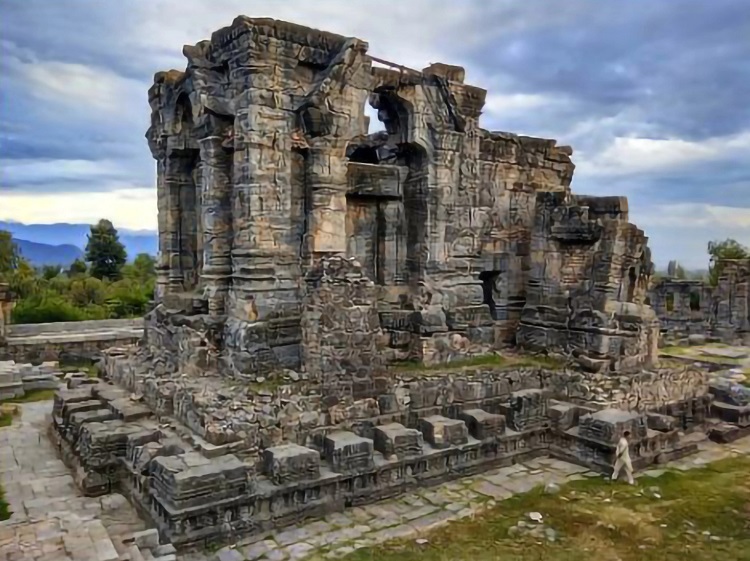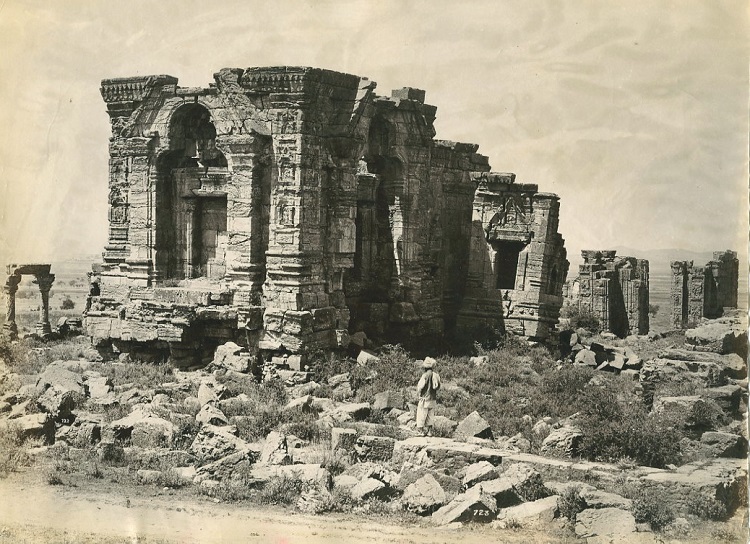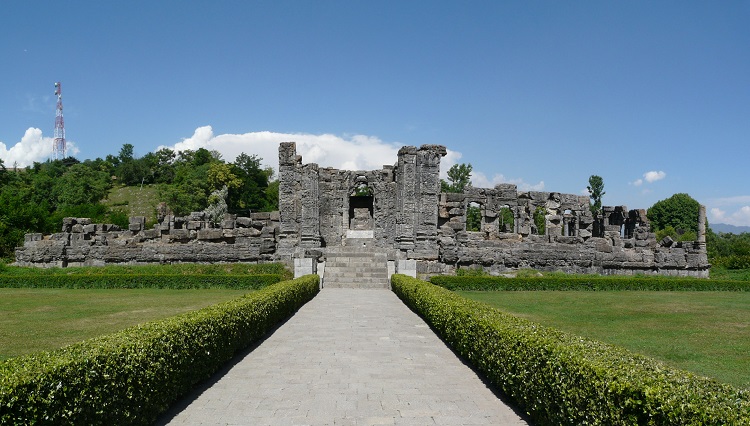Built in the 8th century and destroyed in the 15th century CE, Martand Sun Temple now lies in ruins. To many’s surprise, the temple was featured in a Bollywood movie starring Shahid Kapoor, Haider. Read to know more about it.
Explore the Martand Sun Temple on your next visit to Kashmir, whether you are a history buff or not. This architectural marvel is a ruin now but still attracts many tourists visiting Jammu and Kashmir. More than 1200 years old, Martand Sun Temple is a Hindu Temple dedicated to Surya, the chief solar deity in Hinduism.
You will be surprised to know the story of its construction, who built it, and how it all came crumbling down on the orders of a Muslim ruler.
Many ruins and archaeological findings suggest that Martand Sun Temple is an excellent specimen of Kashmiri architecture and, thus, is worth a visit during your Kashmir visit. Keep in mind that Kashmir has a wide range of weather conditions. For this reason, it is essential to know the best time to visit Kashmir to explore this temple. It is best to visit this temple from April to October.
Read more about Martand Sun Temple below, and who knows, you might find something that piques your interest to add to your next Kashmir tour.
Why Should You Visit Martand Sun Temple?

If you are a history buff, visiting Martand Sun Temple in Mattan, Jammu and Kashmir, is one of the best things to do in Kashmir. Beautiful carvings and structures in the temple complex narrate the stories of its past. Plus, the views around it are impressive, making it the perfect background for your vacation pictures.
Before visiting here, let’s know more about Martand Sun Temple history so that you are not clueless about the site you are exploring.
As per historical records, the first Martand Sun Temple was built by Raja Ramdev of the Pandava dynasty in 3007 BC. He dedicated the temple to Sun God or Surya Dev in Hindi. After him, several kings and monarchs repaired and renovated the temple. But the one name that remained attached to Martand Sun Temple is Maharaja Lalitaditya. He changed the shape of the ancient temple and made it world-famous.
Timings of the temple: 6 am to 7 pm
Exquisite Architecture of the Sun Temple

Martand, The Sun Temple in Kashmir, is remarkable and striking, covering an area of 32,000 square feet. Its architecture is a fine example of the impressive geniuses born in India over the centuries. The complex has a blend of different architectural styles of Hindu, including Kashmiri, which further comprises the Gupta, Chinese, Strain, Gandharan, Roman, and Greek.
The temple’s entrance is located in the west and is grandly decorated with intricate carvings of Hindu gods. The courtyard is also massive and is connected to the main shrine where Lord Surya’s shrine was installed. The Martand Sun Temple’s central part has a tank-like structure with descending stairs.
The main shrine has a smaller antechamber adorned with detailed carvings of Lord Vishnu, Goddess Ganga, Goddess Yamuna, and Sun God, Surya.
Many archeologists had tried to repair an impression of the temple’s main shrine as it was centuries ago before the Muslim ruler finally destroyed it. It is also believed that the main shrine used to have a pyramid-shaped pinnacle, commonly seen in Kashmir temples.
You will notice about 83 smaller shrines around the main Surya Temple. They are lined along the perimeter of the complex, connected by Greek-influenced limestone colonnades.
Today, Martand Sun Temple shows weathered Sanskrit inscriptions, eroded sculptures, and carvings displaying traditional music events, dance postures, and more deities.
Who Destroyed Martand Sun Temple?

Among the oldest temple ruins, Martand Sun Temple is known as ‘Shaitan ki Gufa’ or simply Devil’s Cave by Kashmiri Muslims. A part of the Karkota Empire, a Naga Kingdom, constantly battled with Gandhara’s Suparna, a Garuda Kingdom. Therefore, even today, an eagle is taken as a sign of the devil in Kashmiri folklore.
Martand Sun Temple shaitan ki gufa was an architectural masterpiece that impressed everyone who saw it. But in the 15th century CE, Muslim ruler Sikander Butshikan or Sultan Sikander attacked and destroyed the temple.
It is believed that the temple’s structure was so strong that it took days to tear it apart. Today, it lies in ruins near the Anantnag district in Kashmir.
What efforts are taken to conserve the temple?

As a site of national importance, Martand Sun Temple restoration is undertaken by the Archeological Survey of India (ASI). The name of the temple in its registry of centrally projected sites (Sun Temple) is Kartanda.
How to reach Martand Sun Temple?
Take a cab after you land to Srinagar to Martand Sun Temple. The journey is beautiful, with scenic views. It takes about an hour and a half to reach the temple. It can also be reached from Anantnag, about 9.5 km away. Taxis also run from Pahalgam to Martand Sun Temple, which takes about an hour.
Explore one of the best archeological sites in Kashmir, Martand Sun Temple. Know about its history, structure, architecture, destruction, and conservation efforts made by the Archeological Survey of India. Add this attraction to your Kashmir tour packages and learn about this masterpiece. Make your Kashmir holiday hassle-free by contacting Indian Holiday, who will design a customizable Kashmir package for you as per your needs and preferences. Contact today!





Leave a Comment